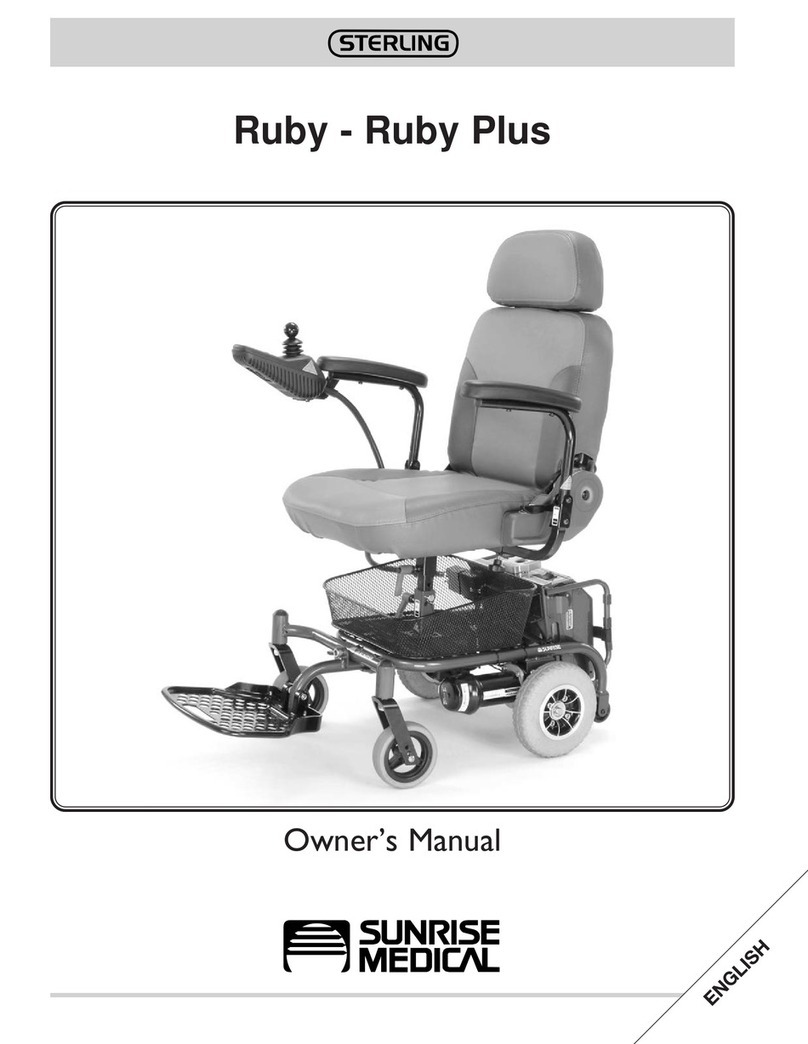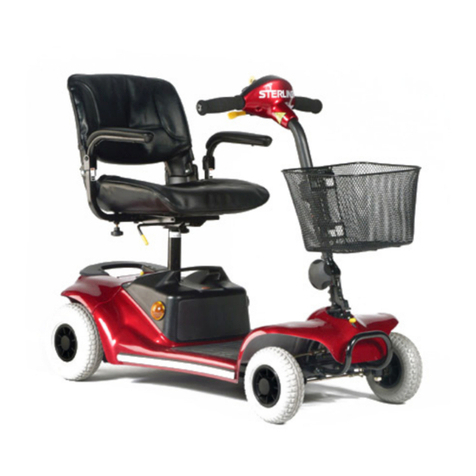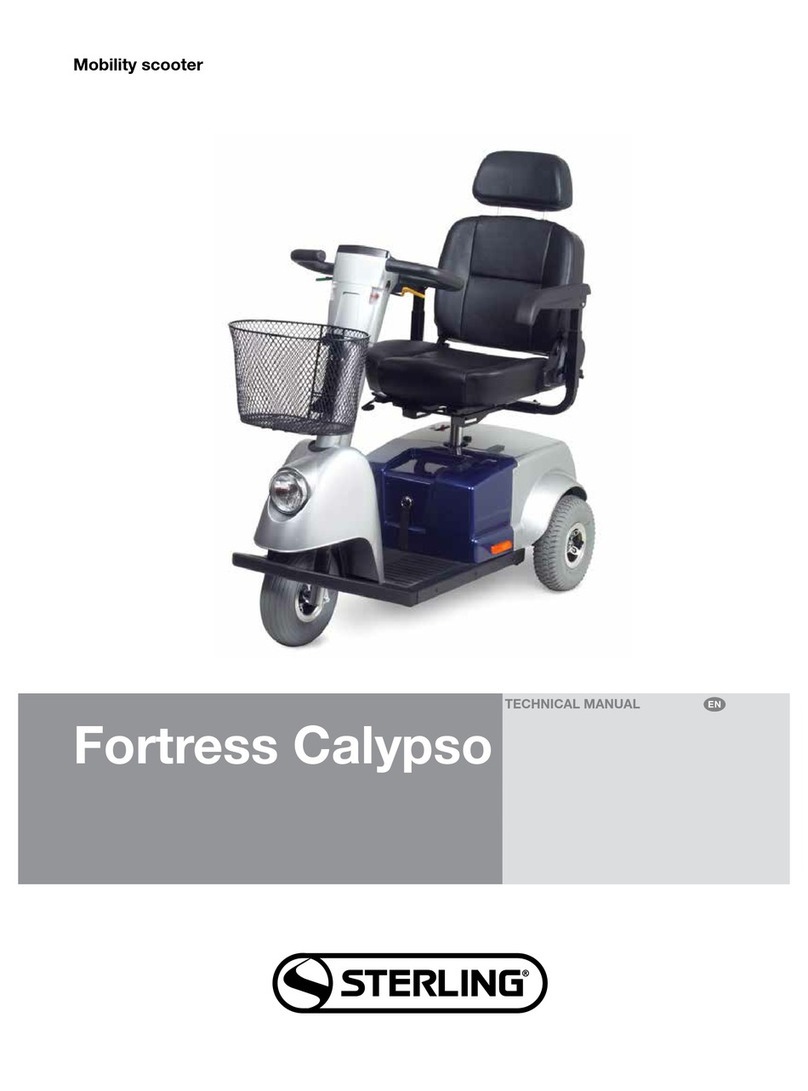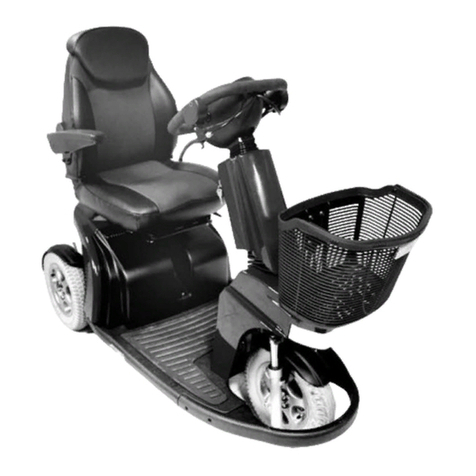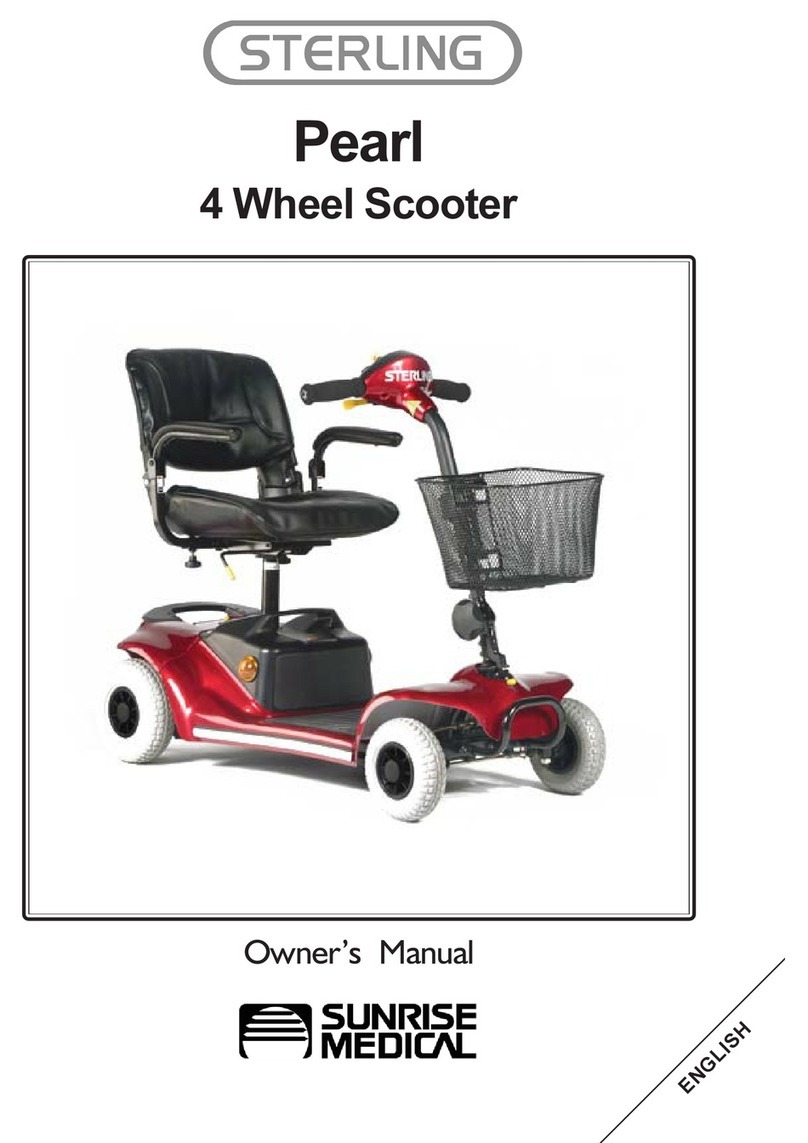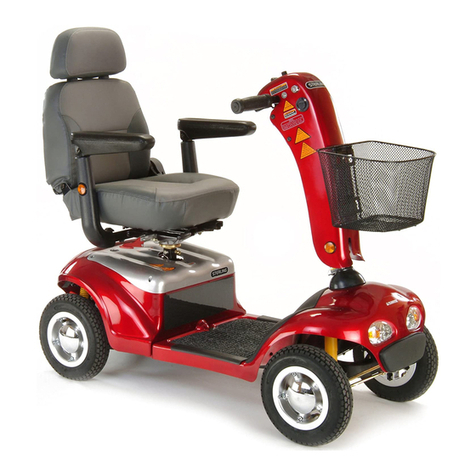1Iss 1
With over 30 years experience, we are one of the longest established mobility equipment
manufacturers in the UK. All of our Scooters, Wheelchairs and Power Chairs undergo
rigorous tests to ensure they meet our requirements for comfort, safety and durability.
Our success is based on the strong traditions of quality, value for money and genuinely
caring for our customers. We pride ourselves not only on designing and building the
most innovative products, but also on our commitment to offer an excellent standard of
customer service both during and after sale.
Before using your scooter please read this manual carefully. It will provide you with
all the information you will require. However, if you have any queries about the use,
maintenance or safety of your scooter, please contact your local dealer. If you have any
other questions please write to the address below.
The scooter is classied as a category B vehicle under the European wheelchair
standard EN 12184.
It is intended for the use of people of all ages who may have difculty walking distances or
for periods of time. It is ideal for outdoor use and suitable for users up to 150kg in weight,
330lbs. Differing user weights can cause performance variation. Maximum user weight
tested using a 150kg test dummy.
The scooter is designed to be driven on footpaths and to cross roads.
It has been manufactured to comply with the requirements of the
Medical Device Directive 93/42/EEC, the radio interference requirements of EEC
Directive 89/336/EEC and the battery charger requirements of EEC Directive 73/23/EEC
and
89/336/EEC. Electro Magnetic elds, such as those emitted by shop alarms may be
disturbed by use of the scooter. The function of the scooter may also be disturbed by
Electro Magnetic elds emitted by shop alarms.
We are dedicated to providing products of exacting quality that conform fully and reliably
to the requirements of their intended use. We are BS/EN ISO 9001 accredited which is
the internationally recognised standard for quality management systems. This approval
ensures we provide quality in all areas of our business from development through to nal
delivery. Should you require any further assistance then please contact your local dealer.
CUSTOMER SERVICES
SUNRISE MEDICAL LIMITED
SUNRISE BUSINESS PARK
HIGH STREET WOLLASTON
WEST MIDLANDS DY8 4PS
ENGLAND
Intern. Telephone +44 1384 44 66 22 Fax +44 1384 44 66 44
Introduction
